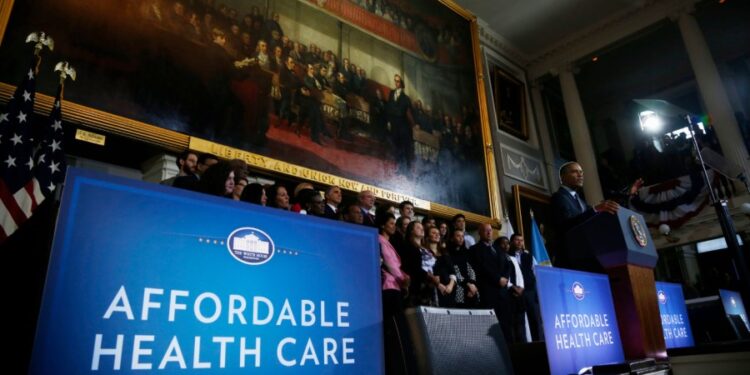
A controversial analysis authored by a long-time critic of the Affordable Care Act claims that a policy that expanded and improved Health Insurance Marketplace premium tax credits for 20 million Americans should be discontinued due to fraud. Fraudulent insurance enrollment by some insurance companies and their agents should be — and is being — targeted by the administration and Congress.
But saying that fraudulent enrollment makes the tax credit unsuccessful skirts the real question in assessing whether to let the health tax credit policy lapse, as will happen without action in 16 months: Has it effectively achieved its goals?
The answer is yes when answering traditional program evaluation questions with information from a number of credible sources.
Here are a few questions that should be used in evaluating how these tax credits — and any policy — stack up: Has the 2021 health tax credit policy increased enrollment as intended? Yes.
Official data show an 88 percent increase in individuals signing up for Marketplace coverage between 2020 and 2024. The nonpartisan Congressional Budget Office projects an average of 6.9 million more enrollees due to this policy over the next decade.
Has the health tax credit policy reduced the number of uninsured Americans? Yes.
Data from the National Health Interview Survey documented record-low uninsured rates in the United States in both 2022 and 2023. The reduction in the uninsured rate between 2022 and 2023 was significant only among those with income in the range that qualifies people for higher premium tax credits.
Has the cost of Marketplace health insurance plans for enrollees gone down? Yes.
The Urban Institute estimates premiums will be 23 to 100 percent lower in 2025 for those receiving the policy’s tax credits than they would be without it. Official data show that 80 percent of HealthCare.gov enrollees have access to a plan for less than $10 per month in 2024 compared to 36 percent of tax-credit eligible people in 2020.
Has access to health care improved? Yes. An analysis of National Health Interview Survey data shows fewer people in the income group targeted by the tax credit increase skipped needed health care or medicines due to cost in 2022 than in 2019.
Has the policy been cost-effective? Yes, according to various projections by the nonpartisan Congressional Budget Office. It estimates that the federal cost of newly enrolled people if the tax credit improvement were made permanent is comparable to that of the federal cost of Medicaid and employer-sponsored insurance for similar groups. This has not to date resulted in a decline in workers offered coverage or people covered by employer-sponsored insurance.
Is the health tax credit easy to administer? The fact that it was implemented in the same year proves this is so. However, the failure of Congress to act this year to continue it, according to the bipartisan National Association of Insurance Commissioners, would roil markets, upend coverage for millions and harm hospitals and other providers by increasing the number of uninsured.
An objective assessment, with information from varied and nonpartisan sources, must conclude that extending and increasing Marketplace premium tax credits has been successful. Not only should it continue, but it should serve as the basis for further efforts to make health care affordable for all Americans.
Jeanne Lambrew is director of health care reform and a senior fellow at The Century Foundation. She was director of the Office of Health Reform at the U.S. Department of Health and Human Services in President Obama’s administration, where she worked on the passage of the landmark Affordable Care Act.







